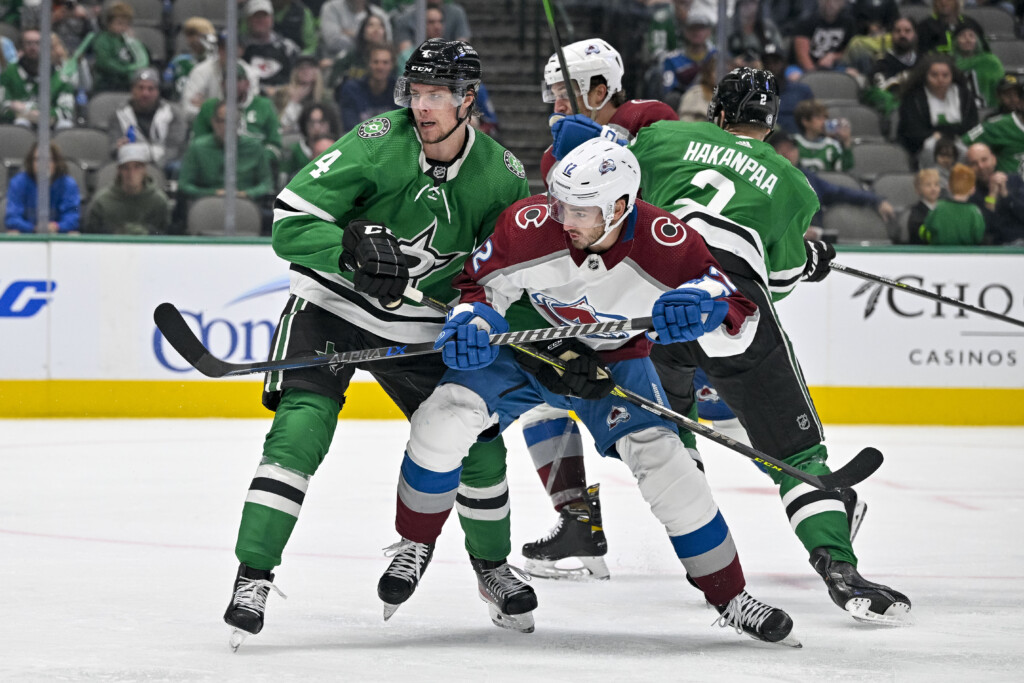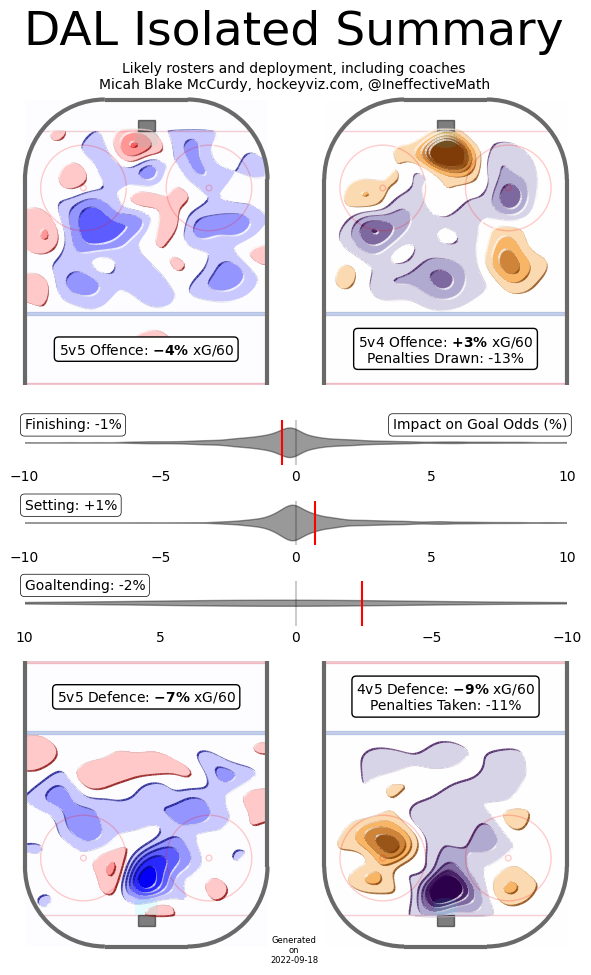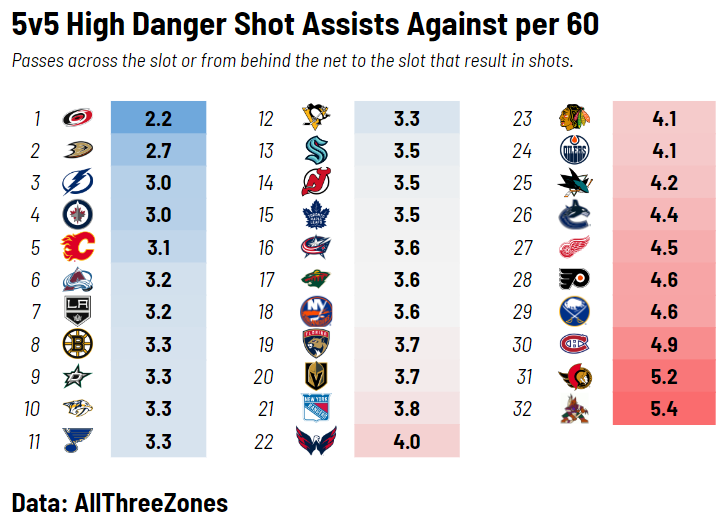All eyes are on Dallas’ offense heading into opening night, as they should be. Offense is what has failed the Stars for years, with multiple coaches installing systems that favored hard work over smart work. In response, Jim Nill signed Jason Robertson to the most cost-effective deal you’ll ever see for a near point-per-game 23-year-old, made a key addition in Mason Marchment, and kept a spot open for one of the organization’s trio of prized prospects. Add that to what was already on hand, plus Pete DeBoer’s more offense-friendly system, and that side of the puck appears to be making forward progress.
So it’s the defense that feels like it will shape the Stars’ season.
The group appears mostly the same as last year, with one major departure (John Klingberg) and one possibly major addition to replace him. I left wiggle room in that last part because your mileage may vary on the addition of Nils Lundkvist. There’s a lot to like about him, besides watching his shot dominate the preseason. It was only last year that he left Lulea HF in the Swedish Hockey League after winning the Salming Trophy as Sweden’s best defenseman. His 14 goals were the most ever by a defender under the age of 21 in the league’s history. EPRinkside’s scouts have him ranked 38th among the top 100 affiliated NHL skaters.
Yet for all the hype, we’re talking about a defender with 25 games of NHL experience, not the 552 Klingberg has logged. It’s a tall order to expect him to replace Dallas’ lodestar, and if he ever does, it won’t be as a 22-year old. Especially not on a team relearning who they are under a different coach in a new system.
Which is where things stop being as similar as they appear. Everyone, from the inexperienced Lundkvist to the battle-hardened Ryan Suter, will undergo his own development figuring out what Pete DeBoer demands in a system that asks them to play dual roles as both defenders and offensive activators.
Yes, that’s exactly what Stars fans have been waiting for, but it won’t come without costs. I never pulled my punches when it came to Rick Bowness’ system—and now that he’s in Winnipeg, neither have Klingberg or Radek Faksa—because I’ve never seen anything like it in almost 30 years of watching the sport. Not even Ken Hitchcock’s 1990s teams had the third forward into the zone (the F3) abandon the forecheck just to track a potential counterrush going the other way. But for all my misgivings, Dallas was third in goals against per 60 minutes of even-strength play and fourth in expected goals against over the last three seasons. Vegas under DeBoer in the same timeframe? The Golden Knights checked in at 13th and 12th, respectively. Sans Klingberg, and sans the security blanket of a conservative system, the potential exists for things to get ugly.
But I don’t think they will. Miro Heiskanen is a borderline generational defenseman, and he’s getting an upgrade. Every No.1 defenseman under DeBoer has seen an increase in shots and points per game, so expect Heiskanen to finally have the green light to lead the rush. If Jani Hakanpaa and Esa Lindell are good for anything, it’s being defensively sound and not doing too much. Suter is a source of consternation for many fans, as he should be: he stopped being a No.1 defender a long time ago, and his ice time never adjusted accordingly. But he can reliably get out of the zone with control and has enough skill with the puck that he can consistently set up his teammates for shots. Colin Miller had impressive stops in Boston and Vegas, implying there’s potential to play up the lineup in a pinch.
In other words, while losing Klingberg was a big deal, the remaining core doesn’t have any weak links. A large reason for that is Heiskanen, who is the roots, branches, and leaves of Dallas’ defensive oak tree. But the rest of the blueline doesn’t get in the way, which I suspect plays a role in why Dallas’ defense shows up well in Micah Blake McCurdy’s model for the 2022-2023 season (pay attention to the bottom left chart).
If you’re not familiar with these, you might be asking, “Wait, isn’t a -7 bad?” McCurdy’s models estimate a team’s defensive performance by adding up each player’s impact. Dallas’ -7 means the Stars are seven percentage points less likely to be scored on in the defensive zone given their roster. Their -7 is impressively just above Carolina (-5) and just below Colorado (-10). This model also takes coaching into account, where DeBoer grades out as an elite presence.
These are only estimates, of course. They’re not factoring in the time it’s gonna take for players to adjust to DeBoer’s system, which is no small thing. In the defensive zone, Bowness wanted his defenders swarming the puck when they didn’t have it and using strongside support along the wall to break out of the zone when they did. Conversely, DeBoer wants his defenders focused on offense from behind the net when they don’t have the puck and surveying available ice to breakout early when they do. These are very different defensive zone philosophies: one is more interested in defending the puck (Bowness) while the other is more interested in defending the play (DeBoer).
Nonetheless, DeBoer is working with a solid foundation. Shots preceded by a pass are more than twice as likely to result in a goal than those that don’t, and Dallas has been a top-10 team at stopping the most dangerous ones.
Nor can they estimate how much the defensive pairs move the needle one way or the other. Will Heiskanen get moved back to his strong side (where his offense has benefited the most) next to, say, Hakanpaa? Will Lindell be exposed as he learns to play without Klingberg, or might DeBoer put Lundkvist next to him to balance out Lindell’s defense-heavy game? If so, does that mean the Stars would be willing to push Suter down the lineup next to Miller? It matters that the Stars get this right: defensemen are actually impacted by the quality of their defensive partner more than their forward opponents.
But even if there are growing pains, there’s reason to believe this will all work itself out under DeBoer. Yes, his teams weren’t as good as Bowness’ at keeping goals down, but as Jake Oettinger’s historic goaltending performance reminded us, selling out for defense won’t win you the Cup. There’s a reason, in other words, that Dallas ranked 17th in even-strength goal differential over the last three seasons as DeBoer’s Vegas teams ranked 8th, just as there’s a reason why Vegas ranked 3rd in time spent with a lead as Dallas ranked 18th in time spent trailing. When you play one-way hockey, you get one-way results.
This won’t be that.
The loss of Klingberg remains a hole Dallas may not fill for a long time, but the Stars defensive core still has a presence even without him. Thanks to the Lundkvist trade, it has an X factor, too. Perhaps even in a second, depending on Thomas Harley’s development. Which is good, because it might need to be better than ever right out of the gate. Their season starts in the division, which deserves special emphasis: per JFreshHockey’s model, the NHL’s three best finishing teams are in the Central (St. Louis, Minnesota, and Colorado, respectively). Dallas’ blueline must start sharp and stay sharp.
There’s a lot to worry about if you’re a Stars fan, but the defense shouldn’t be it. You could say Dallas didn’t fix the defense. But it wasn’t really broken, either.
Author









